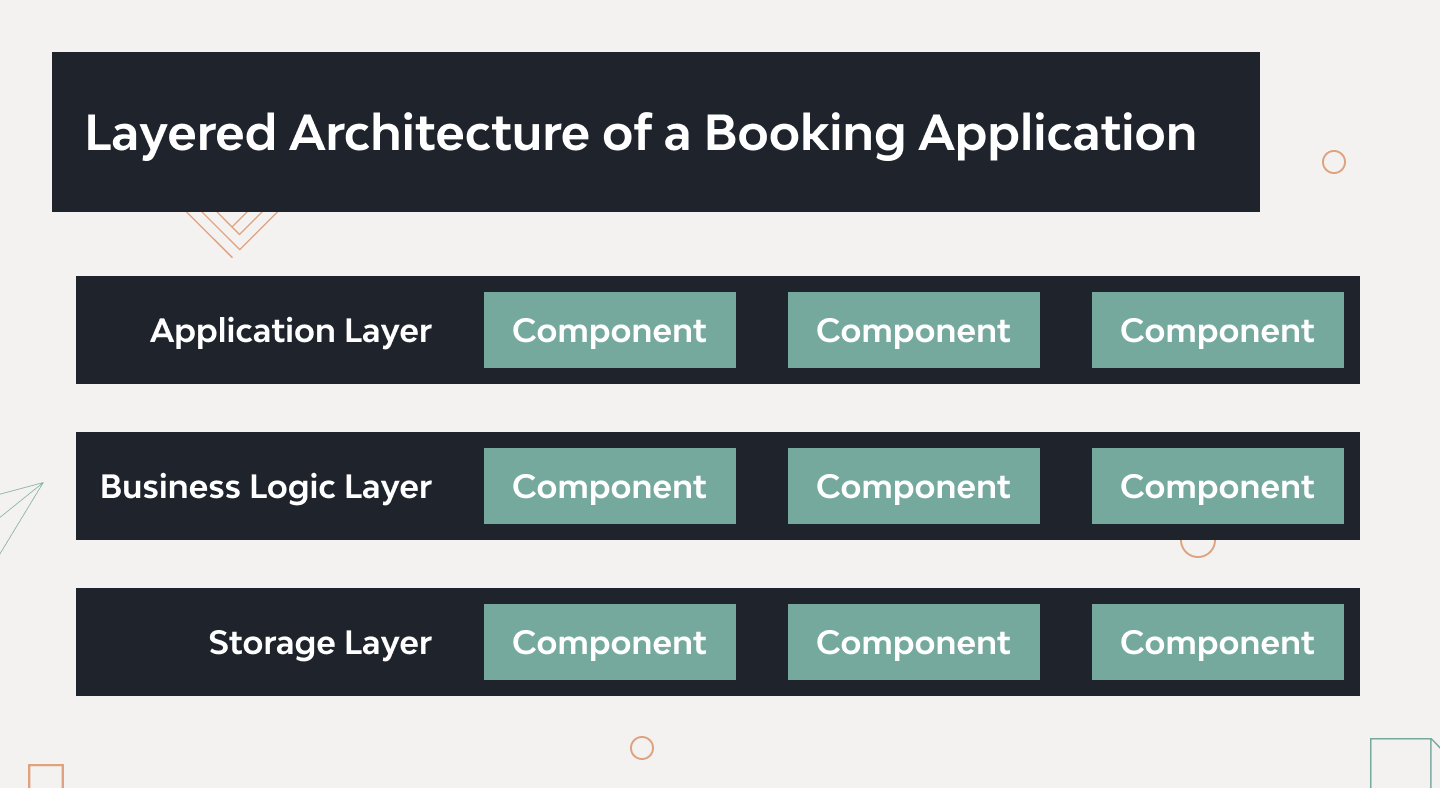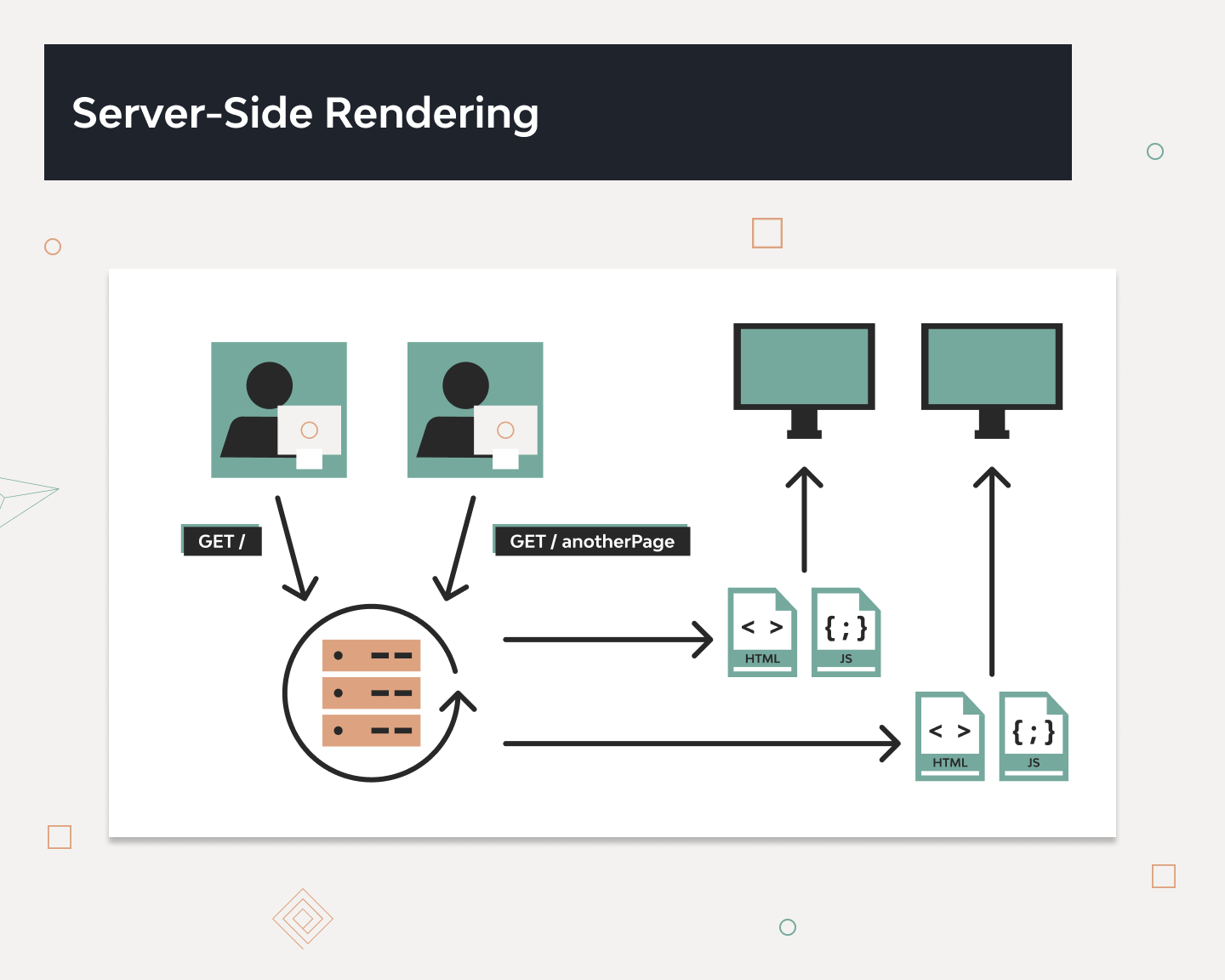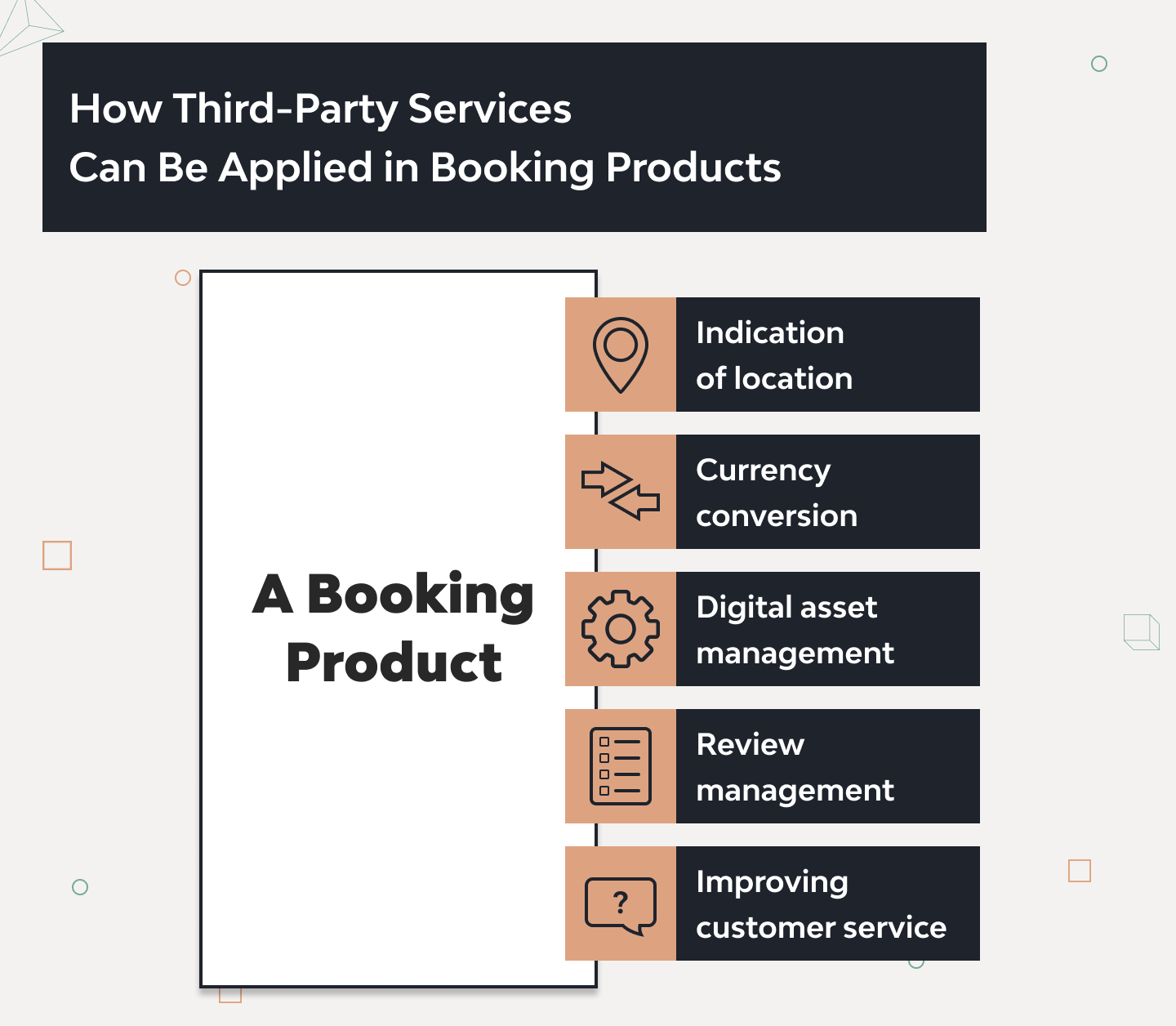Booking Service Software Modernization. How Do We Do It?

How to modernize booking software efficiently? When the goals are set, and industry specifics are taken into account, it remains to add tech expertise. Let’s look at improving product scalability, performance, and optimizing UX for different user roles. We’ll also discuss integrating third-party services and some practical tips.
Over my 13 years of experience in backend development, I’ve firmly learned one thing: legacy software product modernization should both meet current challenges and lay a solid foundation for further development. Otherwise, the process risks going around in circles — again and again.
In the booking industry, the race has accelerated over recent years. Not so long ago, the very fact of digitalization seemed enough to outrun the competition. Today, users expect intuitive simplicity, rich functionality, and lightning-fast performance from any digital product. And tomorrow, the expectations will become higher.
How to meet users’ expectations? What might the legacy software modernization process look like in practice? What technologies and software solutions to use taking into account the specifics of the booking?
Below, I’ll describe in detail how to modernize the legacy booking system on a real case we performed here at DjangoStars.
And the first thing to do before moving on to specific tips and tools is to outline the goals of the upcoming booking software modernization.
What Are the Reasons for Booking Software Modernization?
The reasons that lead different booking companies to legacy software modernization may differ. In this article, I barely address business goals and consider the process exclusively from the IT perspective. The latter often involves the following reasons for software product modernization:
- Ensuring the product’s scalability is intended to meet the demand from a growing number of users. This avoids obstacles to development or costly rework later.
- Performance improvement increases the app’s speed of work to provide a first-class user experience. This brings convenience and smoothness to the service.
- Updating the app’s design helps make it more user-friendly for all user groups, increasing the product’s attractiveness as well as helping to reduce support costs.
- Optimizing app features for both users and administrators ensures compliance and adds convenient tools for certain tasks, improving competitiveness.
- Reconfiguring the integration set allows better adjustment of the product to the possible changes in the company’s marketing strategy. Also, the integration of some ready-made solutions can reduce technical complexity.
The choice of booking software modernization strategy depends on the tasks. The complexity and scope of work can range from minor changes to existing components to complete replacement of the legacy software landscape.
How to Ensure Scalability
Basically, scalability depends on the product architecture. In fact, choosing architecture means choosing a foundation for the entire product. And there’s certainly no one-size-fits-all solution — all have their strengths and weaknesses.
When modernizing a complex booking service, our software modernization company strives to make it convenient for both users (ease of searching and comparing various offers) and administrators (ease of maintenance). To this end, we can choose a layered architecture, which differs by well-defined logic and ease of implementation via various frameworks. Also, it allows us to apply principles of domain-driven design (DDD) to make the backend development more business-oriented.
In its simple form, the approach implies a strict separation of the application layers:
- The storage layer (with the database)
- The business logic layer (the logic of calculating the date, price, etc.)
- The application layer (i.e., the web app as users see it)

Building such layered architecture means that components within a specific layer deal only with logic that’s relevant to that layer, and the frequency of calls to other layers decreases. In this case, isolation is a big advantage, making it possible to change, scale or even replace technologies in a specific layer of the application without affecting the rest.
Note. To learn more about popular types of software architecture and their pros and cons, see my article on the Pre-Development Phase.
How to Increase a Booking Platform Speed of Operation
For booking websites, speed is often sensitive, as their hallmarks are a complex interface and content integration from several different sources. Let’s look at the possible approaches to speeding up the website operation.
Reduce Inputs to the Database
When choosing a service package for booking, a user compares different options. For each of them, certain calculations are performed. For example, there can be a need to check availability on selected dates or to display the prices with the given parameters. As a result, even with a relatively small number of users, the load on the product database can be high, slowing it down. How to lower it?
The layered architecture described in the previous section contributes to query optimization. As long as users just look, select conditions and compare options, the application layer and the business logic layer don’t need to spend time on any writing to the database. Only after adding to the cart an item with the selected parameters is the database accessed and the data transferred to the storage layer.
Get Rid of Unnecessary Page Reloads
Also, when redesigning a booking website, it could be reasonable to design it as a single-page application (SPA). This model helps to reduce the response time to user actions since updating individual data doesn’t require a full page reload. At the same time, we can split the ways from where the information comes on the page.
To exemplify this, let’s take a booking platform that uses the following separation:
- A content management system (CMS) is responsible for “static” content. In it, a company employee can edit the home page, add descriptions for countries and accommodations, or upload photos.
- Another part of the data is calculated in the backend (business logic layer), responding to user actions. This data includes prices loaded depending on the booking services selected, the dates, the exchange rates, etc.
Replace Delay with Background Processing
However, SPA doesn’t allow a fair amount of search engines to index individual pages. To work around this limitation, developers often use Server-Side Rendering (SSR). In such a model, the intermediate client first collects the dynamic data requested by the user into a static HTML page (with CSS and simple JS included). Then this page can be displayed in the browser or given to the web crawler.

But there’s a noticeable delay when using such an intermediate client. How to avoid it? In my opinion, the Static Site Generator (SSG) may be a good solution. It’s a crawler emulator that periodically polls pages that should be available on the frontend. Results as generated HTMLs are stored in a cache, from where they can be quickly served when an actual request is received.

How to Improve Booking Platform UX for Different User Roles
Typical roles to consider when building a booking app are user and administrator. Product modernization that aims to improve the UX focuses on providing an easy path to the goals for each role.
Polish the User Flow
Usability plays an essential role when developing a travel booking service. After all, it has to deal with a lot of variables (such as the country of destination, the duration of booking, options for accommodation, etc.).
To provide users with the best comfort and freedom in achieving their goal (which is booking a suitable service package), implementing more than one navigation option makes sense. For example:
- Tree structure. In the menu, click on the country’s name, go to the page with the list of cities and then select options represented in this city.
- Filter system. Filter and sort the list of options by the selected parameters (country, city, price).
- Search by map. Indicate the destination on the map and pick available options.
These are the possible customer paths to the order. But of course, we shouldn’t forget that in the booking business, working with a client doesn’t end with receiving an order. Customer experience is also affected by the quality of customer support and the level of organization of the trip itself. One proven way to demonstrate the company’s strengths in this regard and to anticipate user questions is, for example, by providing ratings and reviews (via an integrated review management tool).
Clean Up the Administration Processes
Maintenance of a complex booking or e-commerce system usually involves different groups of administrators with different levels of access. For example, accounts of different types may be required for content management, customer support and sales management. Some booking platforms also allocate accounts for service providers (hotels, transport companies, etc.). In addition, you need a “super-admin” to configure other accounts.
Note. Out of the box, the Django framework allows developers to create admin groups that can be given different read and write permissions, making it much easier to properly configure a booking application.
Back office optimization might relate to loading different types of information, creating forms, and adding images. The quality processing of information received from customers is also extremely important. Here are examples of modules that can simplify these tasks:
- The product information management (PIM) module enables the aggregation of product-related data and the execution of complex e-commerce processes (such as displaying personalized pricing and dynamic packaging of booking products).
- The customer relationship management (CRM) system improves the processing of customer profiles and enables more personalized communication with the customer (e.g., event-driven automated messages).
- If administrators have a lot of pictures to work with, it can be optimized with additional services such as the digital asset management (DAM) system.
- If administrators fill out much information of the same type (e.g., to form prices of booking products tied to different dates), we can add the function of duplicating forms with pre-filled data, which only needs minor editing.
The domain and user flow studies help make recommendations on which solutions to use in each specific case.
What Integrations Can Be Helpful
Good news: the practical implementation of the above doesn’t necessarily require coding all the product’s details from scratch. There are a wide variety of ready-made tools that will help fill the product with valuable features. Also important in the booking is third-party services, which can provide a large part of the necessary data allowing engineers to focus on the logic behind their use.

From my experience, I can recommend the following:
- To display location, which is essential for most booking services, it makes sense to integrate a mapping service. Google Maps might be a good option, featuring broad functionality, accuracy, ease of use, and availability on various devices.
- The data the platform uses for the conversion of local prices could be taken from integrated exchange rates and currency conversion services like currencylayer API.
- Integration of a review management system, such as Reevoo, helps to display ratings and reviews on the website. The feedback received helps a booking operator to improve and empowers customers to make informed choices.
- Another useful software for integration is DAM (digital asset management). In particular, Bynder’s DAM can greatly facilitate the work with pictures for admins: metadata management, sorting by tags, analysis and more.
More Tips to Consider:
Customize CRM to better data processing.
A ready-made solution may not consider all the peculiarities of working in a specific domain like booking. Sometimes, it’s reasonable to explore the possibility of transferring data into a new CRM system that’s correctly configured for all the needs and scenarios of a particular business.
Use frontend calculations to speed up performance.
Know-how with a static site generator described in the section above can be helpful to get the smoothest UX. And if it takes too long to load some information, consider transferring as many calculations as possible on the frontend.
Implement a form builder to ease form creation.
If a booking service needs to create many forms, the first thought is to add a form builder; however, its development is resource-intensive and not always justified. When developing an MVP (early product version), it’s reasonable to reduce costs and simply start with 5-10 ready-made templates on the backend (best practice here is to use the same classes that the builder will include if there is a need to develop it later). By compiling templates, admins can receive the necessary forms in a semi-automatic mode.
Use automatic field validation to make form processing more efficient.
I’d recommend setting up automatic field validation to make it easier for the company’s manager to further process received application forms. Here, you can implement something relatively simple, like checking the format of a phone number. Or, you can set up how individual fields affect each other; e.g., the system analyzes the customer’s birthdate and makes the “guardian” field mandatory for those under 18. Or, country verification is performed if required by visa regulations.
Gather information to set up more informative notifications.
When developing an MVP, implementing this feature can wait. In that case, for example, automatic emails can serve order confirmation until other notifications are set up (just make sure the application form asks users which communication channel they prefer). In addition to cost allocation, this approach allows early feedback to more accurately assess which exact notifications are required.
Consider the product’s use on mobile devices to increase its availability.
Accessibility across devices is a significant factor that helps to build a travel service customers will love. For this, provide them, if not a mobile app, then at least a mobile version of the website. A single-page application (SPA) means additional opportunities in this regard, as it’s a versatile option for both desktop and mobile use.
A Revolution by Evolution
I hope everything described above helps travel operators with the smart planning of the booking platform modernization process. In many cases, a company shouldn’t aim to make a big turn overnight. The synergy effect of the many improvements can be much more noticeable.
Some ways for booking software improvements I demonstrated above. Separating the business logic from the storage layer allows developers to make changes without affecting other layers. Optimizing backend/frontend operations increases the speed and quality of UX. And the updated integration set makes the product more attractive to and informative for users.
And one more important point: to succeed in any booking platform modernization, it’s crucial to have expertise in the chosen domain (which the software vendor can confirm with relevant cases) and take into account the specifics of business processes in a particular company.
Of course, no article covers all possible nuances. Contact our development team to discuss your software modernization strategy in detail.
- What can be modernized in a booking platform?
- Software modernization of the booking platform may be carried out to reduce the cost of its maintenance, technological complexity, or various risks. This may include providing scalability, increasing performance, ensuring security, code optimization, and functionality enhancements.
- What affects the cost of modernization of a booking product?
- The cost of booking software product modernization is determined by many factors, including the scope of work (partial rework or complete replacement of software), qualifications of engineers, and timeline. In each case, it requires a preliminary estimation.
- What are the best APIs for integration in a booking product?
- Each integration with a third-party service has its strengths and weaknesses. The choice is determined by factors such as the availability and quality of the required features, technical complexity, pricing, and the possibility of further modifications to the needs of the booking product.






